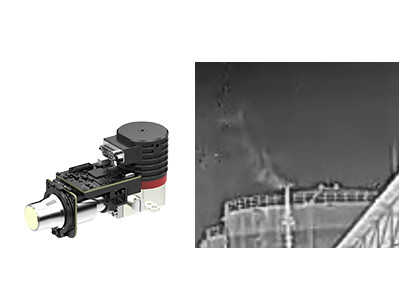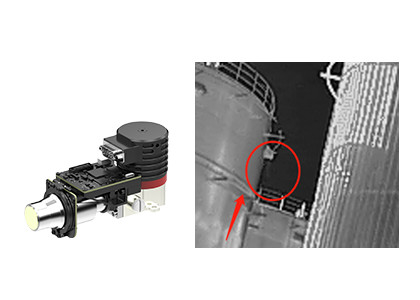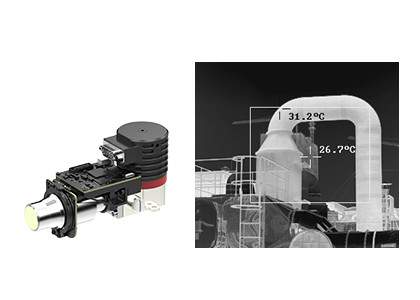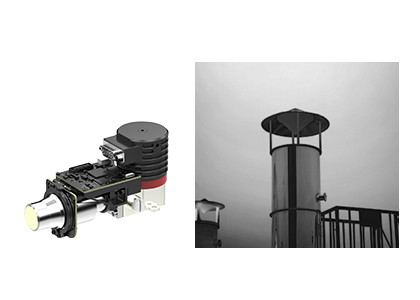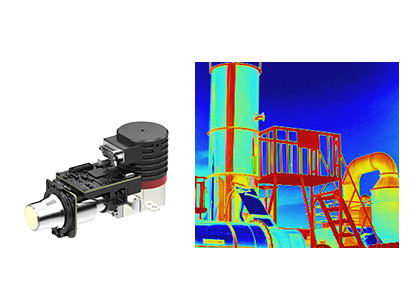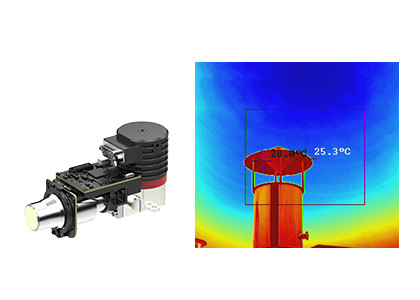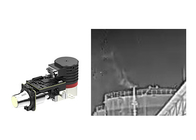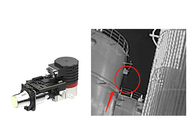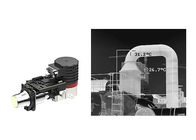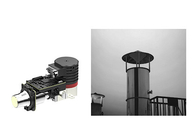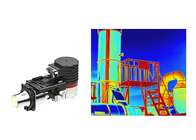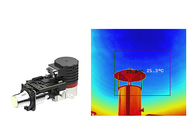-
Thermal Camera Core
-
Thermal Security Camera
-
Drone Thermal Camera
-
EO IR Systems
-
Thermal Imaging Binoculars
-
Infrared Thermal Camera Module
-
High Resolution Thermal Camera Module
-
Cooled Infrared Detectors
-
Optical Gas Imaging
-
Thermal Camera For Fever Detection
-
Cooled Camera Modules
-
Vehicle Mounted Thermal Camera
-
Integrated Dewar Cooler Assembly
-
Uncooled Infrared Detectors
Cooled Optical Gas Imaging Mwir Camera Module 30uM For Gas Leaks Detection

Contact me for free samples and coupons.
Whatsapp:0086 18588475571
Wechat: 0086 18588475571
Skype: sales10@aixton.com
If you have any concern, we provide 24-hour online help.
x| Function | Gas Leak Detection | Cryo Cooler | RS058/RS058I |
|---|---|---|---|
| Detector Resolution | 320x256 | Pixel Size | 30μm |
| NETD | 10mK (F1.5) | Spectral Range | 3.2±0.1~3.5±0.1μm |
| Highlight | Cooled Mwir Camera Module,Gas Imaging Mwir Camera Module,Optical Gas Imaging Mwir Module |
||
320x256 30μM MWIR Cooled Optical Gas Imaging Thermal Module For Visualizing Gas Leaks
EYAS330G cooled AD module is developed on the basis of C330M-G cooled infrared detector and equipped with high performance signal processing circuit. It is an accelerator for customers who have difficulty in starting fast optical gas imaging system integration. By utilizing the infrared technology, the invisible volatile organic compounds (VOCs) leaks can be quickly and effectively detected to ensure the safety in production, transportation and processing of petrochemical enterprises.
Shorten Development Cycle
• Adopt high-performance signal processing circuits to realize the conversion of analog signal to digital signal
• Support 12V power supply for explosion-proof certification
Easy & Fast Integration
• Cameralink interface output 16-bit RAW data, serial port control
• Integrated structure that has consistent dimension with detector
| Model | EYAS330G | EYAS330G2 |
| Performance | ||
| Resolution | 320×256 | |
| Pixel Size | 30μm | |
| Cryocooler | RS058 | RS058I |
| Spectral Range | 3.2μm±0.1μm~3.5μm±0.1μm | |
| Cooling Time (25℃) | ≤6min30s | ≤7min |
| Typical NETD | 10mK (F1.5) | |
| Working Mode | ||
| Frame Rate | 1~200Hz (Adjustable) | |
| Working Mode | Snapshot; ITR Integration Mode; Windows Mode; Anti-blooming | |
| Electrical Specifications | ||
| Standard External Interface | QSH 60pin | |
| Digital Video | Cameralink Output: 16bit Raw Data | |
| External Sync | CC1: INT Frame External Sync CC2: MC External Sync |
|
| Communication | Cameralink Serial Port: TFG+/-, TC+/-, 9600bps | |
| Power Supply | Channel 1 Imaging Panel: 5V Channel 1 Cryocooler: 24V |
Channel 1 Imaging Panel: 5V Channel 1 Cryocooler: 12V |
| Stable Power Consumption | 7W | |
| Size (mm) | 142×58.5×71 | |
| Weight | ≤680g | |
| Working Temperature | -40°C~+60°C | |
The EYAS330G cooled AD module is used for visiualizing the invisible VOCs (volatile organic compounds) and detecting gas leakage such as: Methane, Ethane, Propane, Butane, Pentane, Hexane, Heptane, Octane, Ethylene, Propylene, Isoprene, Methanol, Ethanol, Butanone, Benzene, Toluene, Xylene, Ethylbenzene etc.
![]()
1.What is infrared thermal imaging?
In nature, all objects whose temperature is higher than absolute zero (- 273 ℃) can radiate infrared rays. By using the infrared camera detector to measure the infrared radiation temperature difference between the target itself and the background, you can get different infrared images, which are also called thermal images.
2. How do infrared detectors work?
Infrared radiation that emitted by target enters the sensing range of the thermal detector, then the infrared detector converts the radiation signal of different intensity into the corresponding electrical signal, and then through amplification and video processing, forms the infrared image that can be observed by the naked eyes.
3.What are the advantages of cooled infrared detectors?
The cooled infrared focal plane detector operates at a low temperature which is provided by a detector dewar cooler (ddc). It has high sensitivity and can distinguish more subtle temperature difference than uncooled infrared detector. It can detect, identify and recognize objects at a very long range which is more than ten kilometers away. The structure of cooled detector is very complex which results in a relatively high cost than uncooled detector.



